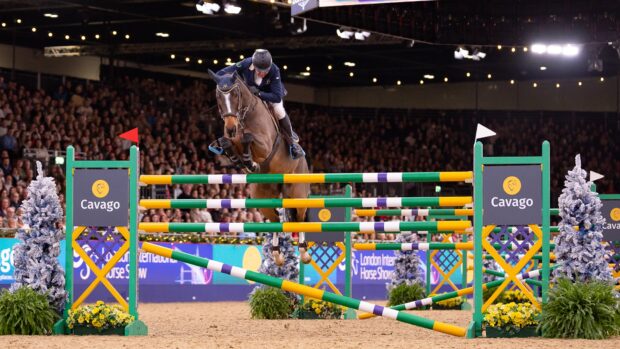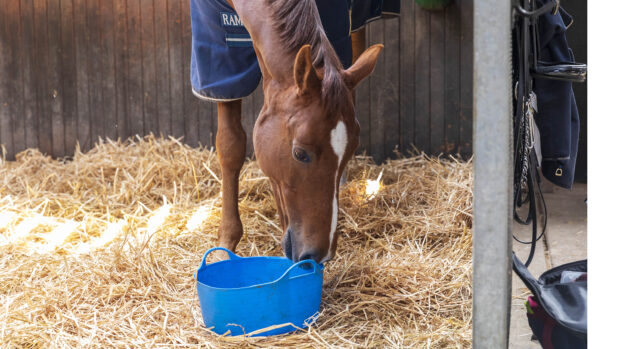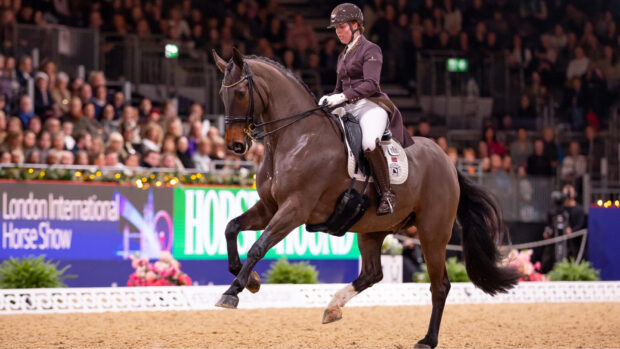Napping horses. Every rider will have come across one or two of them in their time – the horse who refuses to go forward, who baulks at a certain point in every ride or when leaving the yard.
“As a behaviourist, first we want to understand what motivates this behaviour,” says Dr Gemma Pearson, a qualified equine veterinary behaviourist who is director of equine behaviour for The Horse Trust.
“About 80% of cases I see have pain as a contributing factor. There are often behavioural aspects as well and we need to put in place a behaviour modification programme for these horses, but pain is really common and it’s really under-recognised in horses.”
Gemma recommends looking at Sue Dyson’s work on The Ridden Horse Pain Ethogram.
“Look for some of these things in your horse and if they’re occurring, particularly when they go to nap, that might indicate we need to get the vets to look at the horse before we even start to look at the behavioural aspects,” she says.
Assuming that the horse is not in pain – their saddle fits well, they’ve had his teeth done and been checked by the vet – why might a horse nap and how can we re-train them?
Napping horses: the cue to go forward
“Napping means the horse has lost self carriage for the go forward response,” says Gemma. “When I’m backing and training a young horse, I teach them they go forward off my leg and eventually off the seat cue. Then they keep going forward at the same pace, the same tempo, the same stride length, the same direction until I ask them otherwise.
“What you’ll often see when you watch horses who nap is that the rider is having to keep the horse going by nagging them with their leg. If you’re using your leg pressure and the horse isn’t going faster or taking longer steps, then you’ve habituated the horse to that leg pressure – you’ve taught them to ignore it. So then you may have to use more.
“When I ask the rider to stop using their legs, these horses often immediately slow down and that shows me there’s a deficit in one of the basic responses for these horses.”
Gemma says she thinks it is important that the horse goes forward from a leg cue, rather than any other aid.
“People will often say the horse goes forward from my seat or even from a voice cue, but when the horse has just suddenly put the brakes on, they never go forward from a seat or voice cue and there’s no way of reinforcing that or making that a little bit stronger – you can shout louder, but I think for the horse that becomes a different cue,” she says.
“So I’ll always teach horses that I put a very light leg cue on and as soon as the horse goes to take even a single step forward, we release that leg cue.”
When dealing with a horse who has been accidentally trained to ignore leg pressure, Gemma may use gentle whip taps.
She explains: “I’ll get the riders to take their legs away from the horse’s sides slightly and just tickle the horse right behind the leg, like an irritating fly. The millisecond that horse starts to take a step forward, we’ll get the rider to stop tapping with the whip and release the pressure. It doesn’t matter if the horse stops again. This is removal reinforcement or negative reinforcement – the millisecond the horse offers the correct response, you reward the horse by stopping using the stick.
“So we’ll do that from halt to walk and then we’ll do the same exercise from walk to trot and then we might even do it, just using whip taps, from halt to trot, so you keep tapping just a little bit harder until the horse goes into trot. At this point the rider has not used any leg whatsoever.
“It’s really important to say that the amount of whip taps we use motivates the horse to step forward, but it never induces pain or fear, so it’s more about it being an irritating pressure than using lots of pressure.
“And we never just use the whip once because the horse can’t predict that and they can’t release it. If you start off with really finger light tapping on the horse’s side and then make it faster and faster and very slightly stronger, the horse can release it by stepping forward.
“Then you go back and use your legs. If you use your leg to ask the horse to move forward and they don’t, you can back it up with the whip tap. But you’ll often find as soon as you use your legs, these horse do immediately step forward.
“So you’ve now got a horse which hopefully maintains self carriage for going forward – but if they slow down when you take your leg slightly away from the saddle, then you use a fresh leg cue to ask the horse to go forward again, until they can maintain that without ongoing leg cues. We’ve now got a horse who goes forward off a leg cue and it maintains self carriage for going forward.”
Training straightness
When horses nap, they usually slow down, stop and then spin away.
“Most horses spin left, says Gemma. “A bit like we’re right-handed, most horses will push off that right forelimb and go to the left.
“With horses that nap, I’ll get the rider to go down the centre line and take both legs away – sometimes the horse will drift a little bit, even if they maintain their speed and line. Also I ask the riders just to give and retake the reins for two seconds – you’ll often find the horses drift and a lot of them will drift left, because they are falling out through the shoulder.
“This tells me the rider is constantly using the reins to keep the horse straight and therefore when the horse does nap, they just push through that pressure that’s already there. So I want to train the horse to maintain straightness by themselves – that is their job.
“So we’ll retrain the horse, initially using the reins. I might open my rein away from the horse’s shoulder so the horse will step the foreleg on that side away from the horse’s body. We don’t want them bending the head and neck – how many horses do you see where the horse tries to go left, so the rider tries to use the reins to position the horse’s head to the right, but the shoulders keep going left?
“What’s really important is that if you give a rein cue, you can use that to move the horse’s foot away from its body and that initiates a turn response. If I move my right rein away from the horse’s body then the horse steps right, but if I put my left rein against the horse’s neck I also want the horse’s shoulders to move to the right and the horse to step to the right.”
Once you have retrained the horse’s responses to leg cues to go forward and to rein cues to stay straight, dealing with a nappy horse should become easier.
“In the worst case scenario, if the horse has spun, stop them, turn them back the same way,” says Gemma. “People will often say spin them in a full circle, but if the horse stopped and pushed off its right foreleg and you then continue to spin it round to the left, you’re practising pushing off that right foreleg more and more.
“If the horse spins round and is facing the other direction and it’s pushed off its right foreleg so it’s spun left, I then get them to push off the left foreleg to bring themselves right to straighten themselves up again. And then ask them to go forwards.”
And finally…
Gemma also reminds riders that if the horse always naps at one spot, they may be thinking that every time they come there, their rider puts them under lots of pressure.
“So I’d almost think of taking the horse towards that spot and halting them and giving them a scratch. Making it nice for them. Then just ask for a few steps forward and give them another scratch. Maybe even give them a small food reward. So rather than trying to force the horse to complying in an area they may be fearful of, instead we’re trying to set the horse up for success by helping them be more confident and want to go forward in certain areas.”
Gemma also has advice for riding horses which suddenly put the brakes on, having been walking forward happily, which she sees as a subset of napping horses.
“Sometimes you can even feel the horse’s heart beating through the saddle, so we know this horse has a very high level of arousal, she says. “The temptation is to put the leg on to try and get the horse going forwards.”
Gemma refers to a study in which an umbrella was lowered into an arena of loose horses. The most common response was for horses to stop and startle, and it took an average of 13 seconds for horses’ heart rates to start to drop. In some horses, it took nearly a minute.
“If they stop that suddenly and you can feel the heart rate and the head’s gone up and they’ve gone really tense, just give them a scratch, just let them stop for a second, because at that point in time, they’re probably in a high state of arousal so they’re not capable of learning.
“And if you just give them a scratch and let them look, just give them a second to think about it, the horse will often walk on ok. I will actually get people to count up to 15 or 30 and then quietly ask them to move on. But if you try and ask them to walk on at the start, the horse is in a freeze response, they initially respond to nothing, the rider puts more pressure on and then they suddenly explode.”
Gemma concludes with a reminder that pain is an underlying contributing factor in 80% of napping horses.
“So please do get these things looked into – just trotting the horse up in a straight line is not going to tell us very much. Work with your vets to see the horse on the lunge and under saddle,” she says.
You might also be interested in:
The aim of the video series is to improve welfare and performance in ridden horses

The Horse & Hound Podcast 128: Working hunter specialist Kelly Ward | Why horses nap | News round-up

Why a pat on the neck isn’t what your horse would choose and how to use rewards effectively in training

How can you tell if a horse is happy?

Is your horse in pain? New videos explain the key signs

Subscribe to Horse & Hound magazine today – and enjoy unlimited website access all year round
Horse & Hound magazine, out every Thursday, is packed with all the latest news and reports, as well as interviews, specials, nostalgia, vet and training advice. Find how you can enjoy the magazine delivered to your door every week, plus options to upgrade your subscription to access our online service that brings you breaking news and reports as well as other benefits.




